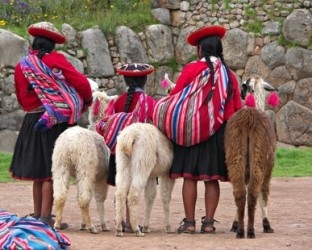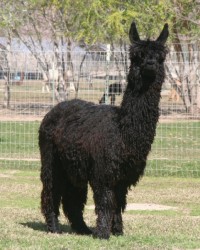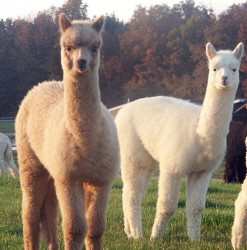There are two types of alpacas – the Huacaya (wah-ki-ah) and the Suri (sir-e). The suri’s fiber grows quite long and forms silky, pencil-like locks. The huacaya has a shorter, dense, crimpy fleece, giving it a very woolly appearance. They are about 36″ tall at the withers and weigh about 150 pounds.
Alpacas live for up to 20 years, so they are a long-term investment. They have a long reproductive life and produce fleece for their entire lives. Their gestation period is eleven and one half months, and they have a single cria. Occasionally there will be twins, but these are extremely rare.
Perfect for a family farm alpaca are gentle and easy to handle. They are safe even for younger children to work with, as they do not bite or butt. This is a venture that the whole family can work together on.
It is our vision that alpaca can become a vital part of the Virginia economy. Well suited to the land and environment they are also environmentally friendly, protecting the land that we love.- Alpaca have soft padded feet. This leaves pasture undamaged, and usable for years.
- They have no top front teeth, so they are gentle grazers.
- The alpaca does not usually eat or destroy trees.
- The average alpaca only eats four pounds of food a day.
- Although they need a regular fresh water supply alpaca do not require abundant amounts of water.
- The herd tends to deposit their manure in one or two spots in the pasture, making clean up easier.
- Alpaca manure is a fantastic fertilizer.
- One good acre of pasture can support up to ten alpaca.
- Alpaca require minimal fencing, as they do not challenge it.
- However, be careful to have enough fencing to keep them safe from predators.
- They can produce four to eight pounds of fleece a year.
- Their fleece produces 87 to 95 percent clean fiber compared to sheep’s wool.


